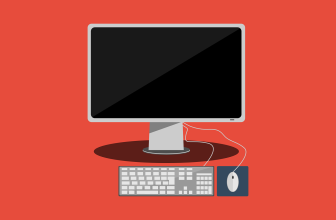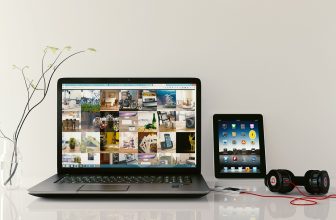In an age dominated by digital content, screen recorders have evolved from niche tools to everyday essentials. Whether you’re a content creator, educator, gamer, or casual tech user, the ability to capture your screen opens the door to a world of creative possibilities.
If you’ve ever wondered how to get the most out of your screen recording software, this blog is for you. Let’s explore innovative, fun, and productive projects you can undertake using a screen recorder — right from the comfort of your desk.
1. Create Engaging Video Tutorials
Perhaps the most obvious yet impactful use of screen recorders is for tutorial creation. Whether you’re teaching how to use Photoshop, build a website, or navigate Excel, recording your screen provides a step-by-step visual guide that’s easy to follow.
Tips:
- Use a microphone for clear voice-over instructions.
- Highlight mouse movements or clicks to guide attention.
- Annotate with on-screen text using your recorder’s built-in tools.
Ideal For: YouTubers, educators, IT support staff, trainers.
2. Document Software Bugs for Developers
Struggling with a glitch? Instead of typing a long message to the dev team, use a screen recorder to show the problem in action. This is incredibly helpful in bug reporting and speeds up the resolution process.
Pro Tip:
- Keep your recording short and focused.
- Mention the steps you took before the error appeared.
Ideal For: QA testers, app users, software developers, beta testers.
3. Record Online Meetings or Webinars
With the rise of Zoom, Teams, and Google Meet, screen recording lets you archive important meetings or webinars for future reference. Whether it’s a team brainstorming session or an expert lecture, you won’t miss a detail.
Be Ethical:
- Always inform participants that you’re recording.
- Store sensitive recordings securely.
Ideal For: Students, remote workers, HR teams, corporate trainers.
4. Build a Gaming Channel
If you’re into gaming, screen recorders are your ticket to streaming or uploading gameplay videos. Capture your best moves, walkthroughs, tips, or commentary to share with the world on platforms like YouTube or Twitch.
Add Personality:
- Use a webcam overlay to show your reactions.
- Include commentary to engage your audience.
Ideal For: Gamers, streamers, esports enthusiasts.
5. Develop Software Demos or Product Explainers
Are you launching a new app or website? Use a screen recorder to create demo videos that show how your product works. It’s a cost-effective marketing tool that enhances customer understanding and trust.
Combine with:
- Voice-over explanations.
- Simple animations or transitions.
Ideal For: Startups, software developers, product managers.
6. Make “How-To” Tech Support Videos
Tech support doesn’t always need to be in-person. Use a screen recorder to produce “how-to” clips that solve common tech issues — from resetting a router to installing software. These can be shared on forums, blogs, or internal help desks.
Ideal For: IT teams, support agents, tech bloggers.
7. Record Time-Lapse Workflows
Want to show progress on a digital drawing or video editing project? Speed things up by screen recording your work and then converting it into a time-lapse video. It’s both artistic and educational.
Popular Tools:
- OBS Studio
- Camtasia
- Bandicam
Ideal For: Designers, editors, animators, artists.
8. Capture Online Courses for Revision
If you’re enrolled in an online course, you can screen record sessions to revisit lessons later. This is especially helpful during revision or when studying for exams. Just be sure to comply with the platform’s copyright rules.
Storage Tip:
- Organize recordings by course/module.
- Use cloud storage for easy access across devices.
Ideal For: Students, lifelong learners, certification candidates.
9. Compile Feedback or Walkthroughs for Clients
Freelancers and consultants can record screens to show work progress, explain features, or gather feedback. This visual method is often clearer than written reports.
Use Cases:
- Walkthrough of website prototypes.
- UI/UX explanations.
- Revisions before final delivery.
Ideal For: Freelancers, agencies, consultants.
10. Create Reaction Videos to News or Web Content
Screen recorders with webcam overlay capabilities allow you to react to online content in real-time. Watch a viral video, new trailer, or controversial post while recording your screen and facial expressions.
Ideal For: YouTubers, influencers, commentary creators.
11. Capture Social Media Content for Repurposing
Want to preserve that cool Instagram live or Twitter space discussion? Use a screen recorder to archive ephemeral content and later repurpose it for blog posts, YouTube summaries, or training sessions.
Caution: Respect copyright and always credit original creators.
Ideal For: Social media managers, marketers, bloggers.
12. Create Online Portfolios
If you’re in a digital field like design, development, or animation, screen recording can help you create a dynamic portfolio. Walk viewers through your design process, show interactive websites, or demonstrate app usability.
Ideal For: UI/UX designers, coders, motion graphic artists.
Best Practices for Screen Recording
To make your recordings professional and effective:
- Clear your desktop of unnecessary clutter before recording.
- Mute notifications to avoid distractions.
- Use a good microphone if recording voice.
- Edit your video to trim mistakes or add transitions.
Final Thoughts
A screen recorder is more than just a tool — it’s a window into your digital creativity. Whether you’re teaching, entertaining, working, or learning, the ability to visually document your screen opens up endless possibilities.
With the right software and a little creativity, you can turn everyday screen activities into compelling and useful content. So next time you sit down in front of your computer, ask yourself: What can I create behind the screen?









